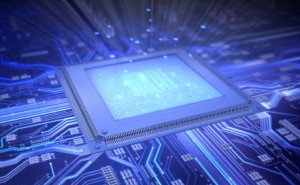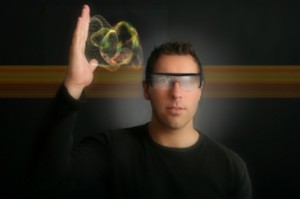 Have you ever thought about how truly marvellous all the gadgets we have today are? It’s not just the mp3 players, digital watches, e-book readers etc., but even things like traffic lights, airplane guidance systems and even climate control devices, which, even though we hardly notice them, makes everything more convenient and easy for us to go through our daily routines. And what make all of these things possible are embedded systems.
Have you ever thought about how truly marvellous all the gadgets we have today are? It’s not just the mp3 players, digital watches, e-book readers etc., but even things like traffic lights, airplane guidance systems and even climate control devices, which, even though we hardly notice them, makes everything more convenient and easy for us to go through our daily routines. And what make all of these things possible are embedded systems.
An embedded system is a computer built for one specific purpose, as opposed to a PC which is built for general purposes and can be used for many things (like watching movies, reading email, surfing the net, etc.) One device can have one or several embedded systems. A great example is a car. A car can have one embedded system to control the anti-locking brakes, another to control the automatic four-wheel drive, one to control the heater and air conditioner, and a multitude of other devices. Embedded systems are great for things that just have one purpose, and it is especially great for tasks which are repetitive and have to be precise (such as the anti-lock braking systems.) Equally, embedded systems are applied to transportation, medical applications and fire safety equipment because they can perform their tasks accurately in real-time without any delay and almost without any need for outside input.
Embedded systems have been around for longer than most people realise. For example, one of the first ones was used in the space shuttle, Apollo Guidance System, in the 60s. These were created to reduce the size and weight of onboard computers for the shuttle craft and one of the first and prime examples of integrated circuit use. Of course, as technology advanced, embedded systems became cheaper and smaller, and thus we’re no longer limited to putting them on million-dollar space shuttle, but even things like microwave ovens, water heaters and dishwashers.
Why an Embedded System?
Perhaps many people may think, instead of using a dozen small computers in one device, why not just put one computer to do all these things? Well, perhaps for things with a lot of embedded systems (such as the car) that may be possible, but what about for simple things, like your coffee machine, oven or a digital watch? Adding an entire computer system wouldn’t make much sense, when all you really need for your embedded system to do is tell time, turn itself on in the morning or make sure it stays a certain temperature. It simply makes much more sense to put in a simple, single-function computer.
When deciding on an embedded system, these are usually the top considerations:
Price – A computer used to be something only governments or big companies could own. Embedded systems make it possible for electronics to be affordable and efficient, so that we can place them in virtually anything and everything (yes, even the kitchen sink.)
Size and Weight – Before integrated circuits, no one could even dream of computers smaller than their living room, much less the palm of their hands. Now, we can have embedded systems in things even smaller than our palms, and they continue to become smaller and lighter.
Productivity – An embedded system does only one thing, and it can do it efficiently. For many repetitive tasks, such as the many mentioned previously, this is enough. It’s simply not a good use of resources to have an entire general purpose computer in something that only does one thing. What about that car example? Well, it’s true you could have one PC to control, but it would not only be expensive, but it would be inefficient. If the computer broke down, then you wouldn’t be able to use your car. With embedded systems, if your car’s temperature control broke down, you could still get to where you needed to go (you’d just need to wear shorts and roll the windows down.)
Embedded systems aren’t perfect, though; for example, you’d need a lot of testing to release certain products out on the market (such as medical and life-saving devices) and because it is embedded deep into the product, you couldn’t update it easily. However, embedded systems have certainly changed the course of human development in the last 20 years, and will most likely do so in the next century.
LX is an award-winning electronics design company based in Sydney, Australia. LX services include full turnkey design, electronics, hardware, software and firmware design. LX specialises in embedded systems and wireless technologies design. www.lx-group.com.au
Published by LX Pty Ltd for itself and the LX Group of companies, including LX Design House, LX Solutions and LX Consulting, LX Innovations.





 In sharp contrast, Smart Grids allow for seamless transfer of information across the entire power grid. Embedded systems deployed at various points of the grid, from power generation to end-user consumption, help in analysing the critical characteristics of the system and also communicate it to other systems attached to the grid to achieve excellent energy management capabilities. Embedded systems are computers that can be integrated or “embedded” into a larger electrical or electronic equipment, to allow the equipment to have the necessary “intelligence” to function automatically. The use of embedded technology also allows the deployment of centralised Smart Energy Management Software to control the power available across the entire grid.
In sharp contrast, Smart Grids allow for seamless transfer of information across the entire power grid. Embedded systems deployed at various points of the grid, from power generation to end-user consumption, help in analysing the critical characteristics of the system and also communicate it to other systems attached to the grid to achieve excellent energy management capabilities. Embedded systems are computers that can be integrated or “embedded” into a larger electrical or electronic equipment, to allow the equipment to have the necessary “intelligence” to function automatically. The use of embedded technology also allows the deployment of centralised Smart Energy Management Software to control the power available across the entire grid.